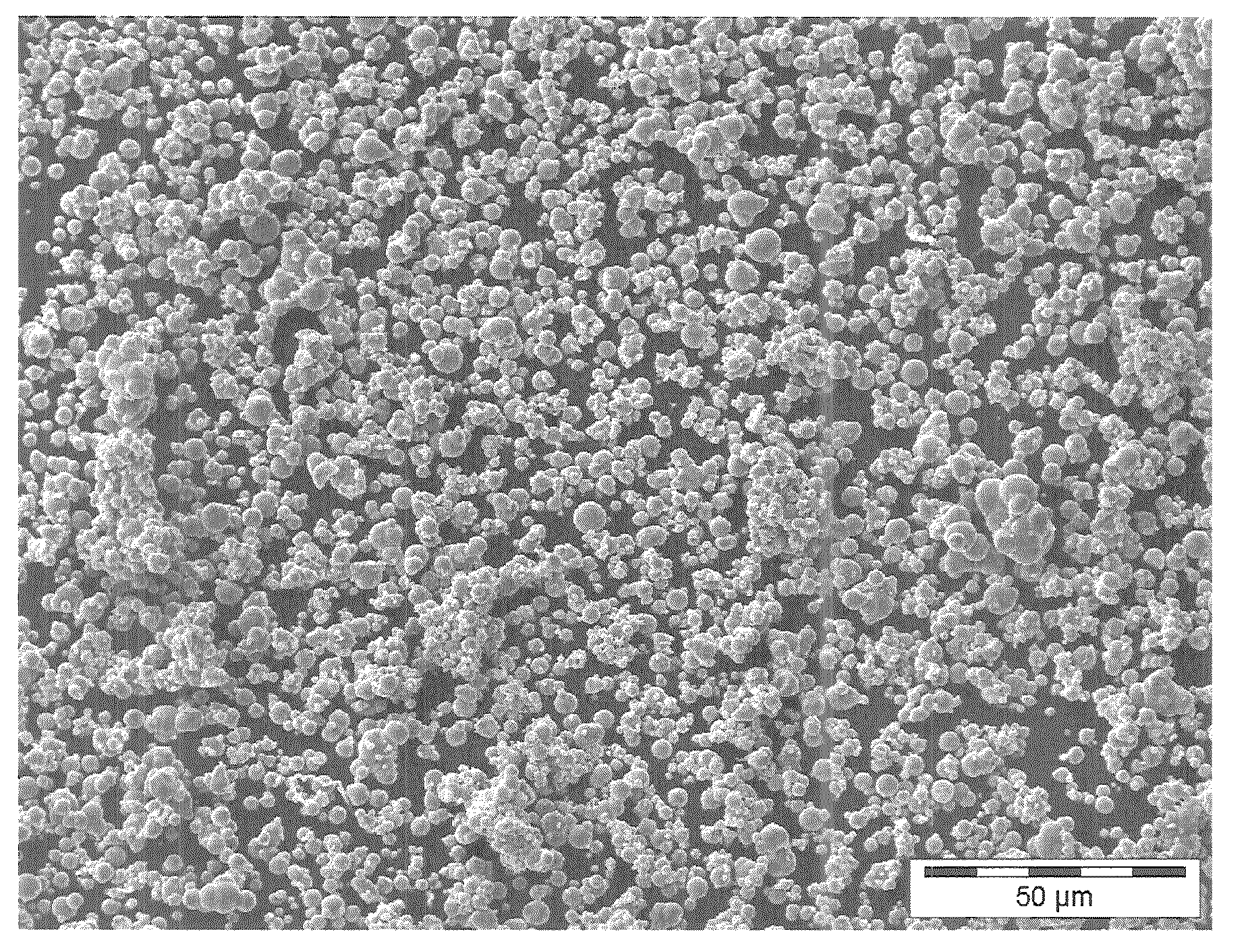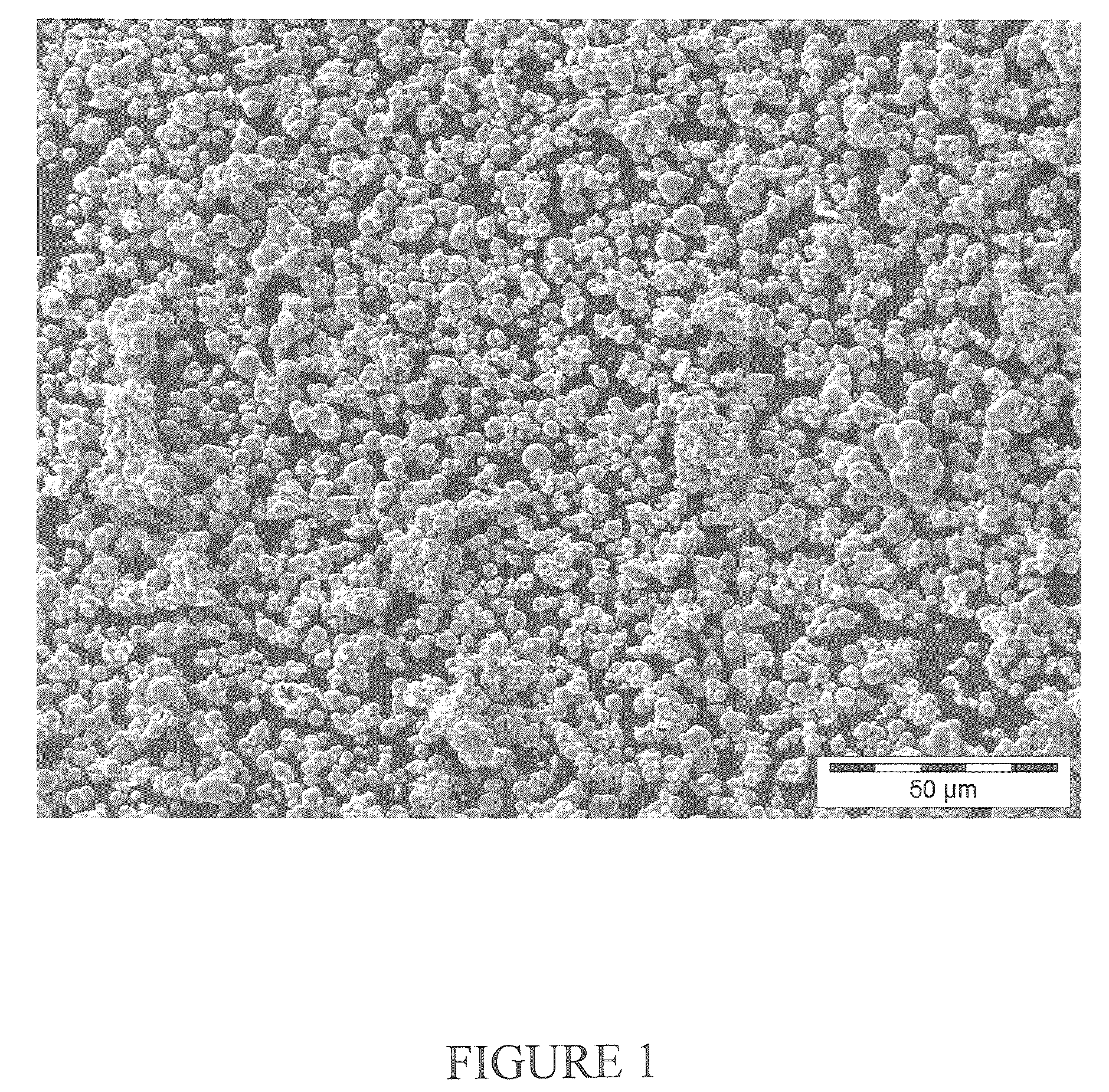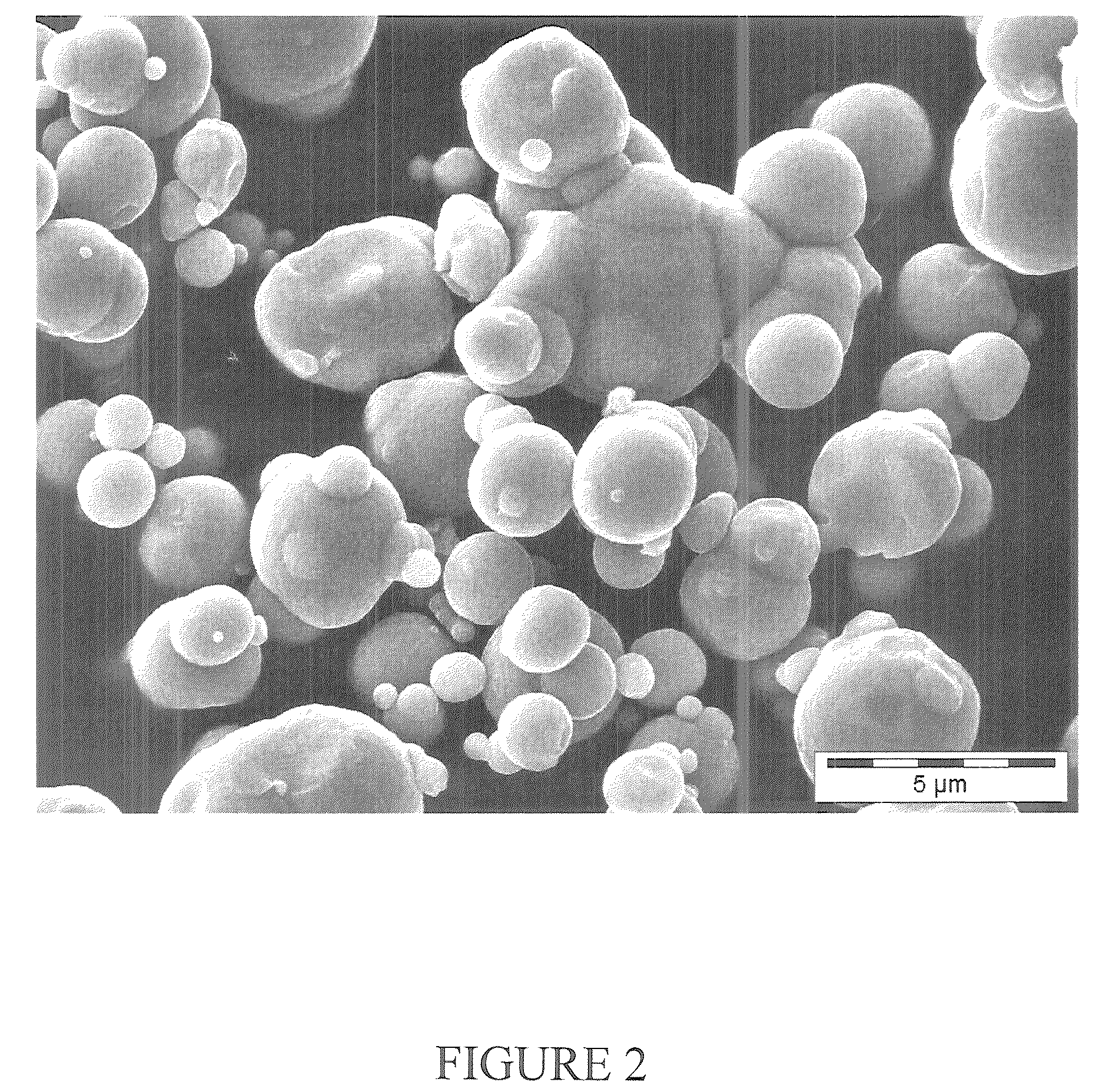Iron- and manganese-comprising heterogeneous catalyst and process for preparing olefins by reacting carbon monoxide with hydrogen
a heterogeneous catalyst and carbon monoxide technology, applied in the field of ironand manganesecomprising heterogeneous catalysts, can solve the problems of large amounts of undesirable methane, loss of metal, and difficulty in reducing iron oxides required as catalyst starting materials, etc., to improve mechanical stability, improve stability, and improve the effect of operation li
- Summary
- Abstract
- Description
- Claims
- Application Information
AI Technical Summary
Benefits of technology
Problems solved by technology
Method used
Image
Examples
example 1
Comparative Catalyst
Production of Mn-Doped Carbonyl Iron Catalyst by Impregnation
[0095]40 g of carbonyl iron material having a particle size distribution of agglomerated spherical primary particles (secondary particles) such that 90% by weight have a diameter in the range from 50 to 71 μm, see FIG. 4, were prepared from carbonyl iron powder type CN, BASF AG or now BASF SE, by treatment with hydrogen at least 300° C. and impregnated under ambient conditions (room temperature, atmospheric pressure) with 4.4 ml of aqueous manganese nitrate solution. The aqueous manganese nitrate solution was produced by dissolving 1.92 g of manganese nitrate (96%, Riedel de Haen) in 4.4 ml of demineralized water. The impregnated catalyst was dried at 120° C. for 10 hours. The catalyst obtained comprised 0.94% by weight of Mn.
example 2
Comparative Catalyst
Production of K- / Mn-Doped Carbonyl Iron Catalyst by Impregnation
[0096]300 g of carbonyl iron material having a particle size distribution of agglomerated spherical primary particles (secondary particles) such that 90% by weight have a diameter in the range from 50 to 100 see FIG. 4, were prepared from carbonyl iron powder type CN, BASF AG or now BASF SE, by treatment with hydrogen at least 300° C. and impregnated under ambient conditions (room temperature, atmospheric pressure) with 33 ml of aqueous potassium / manganese nitrate solution. The aqueous potassium / manganese nitrate solution was produced by dissolving 14.08 g of manganese nitrate tetrahydrate (>98.5%) and 1.59 g of potassium nitrate (99%, Riedel de Haen) in 33 ml of demineralised water. The impregnated catalyst was dried at 120° C. for 4 hours. The catalyst obtained comprised 0.19% by weight of K and 0.94% by weight of Mn.
example 3
According to the Invention
Production of K- / Mn-Doped Carbonyl Iron Catalyst (Mixed Oxide) by Impregnation
[0097]150 g of carbonyl iron material having a particle size distribution of agglomerated spherical primary particles (secondary particles) such that 90% by weight have a diameter in the range from 50 to 100 μm, see FIG. 4, were prepared from carbonyl iron powder type CN, BASF AG or now BASF SE, by treatment with hydrogen at least 300° C. and passivated in a controlled manner by means of 5% by volume of air in nitrogen in a rotary bulb oven at a temperature up to not more than 35° C. The surface-passivated carbonyl iron powder is impregnated under ambient conditions (room temperature, atmospheric pressure) with 16.5 ml of aqueous potassium nitrate / manganese nitrate solution. The aqueous potassium nitrate / manganese nitrate solution was produced by dissolving 7.23 g of manganese nitrate tetrahydrate (96%, Riedel de Haen) and 0.79 g of potassium nitrate (99%, Riedel de Haen) in 16.5 ...
PUM
| Property | Measurement | Unit |
|---|---|---|
| temperature | aaaaa | aaaaa |
| temperature | aaaaa | aaaaa |
| diameter | aaaaa | aaaaa |
Abstract
Description
Claims
Application Information
 Login to View More
Login to View More - R&D
- Intellectual Property
- Life Sciences
- Materials
- Tech Scout
- Unparalleled Data Quality
- Higher Quality Content
- 60% Fewer Hallucinations
Browse by: Latest US Patents, China's latest patents, Technical Efficacy Thesaurus, Application Domain, Technology Topic, Popular Technical Reports.
© 2025 PatSnap. All rights reserved.Legal|Privacy policy|Modern Slavery Act Transparency Statement|Sitemap|About US| Contact US: help@patsnap.com



